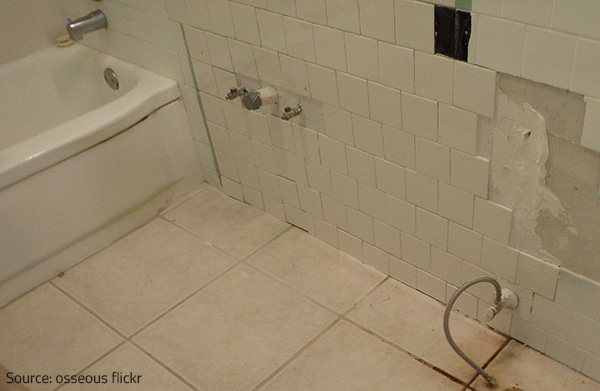How do you really feel in relation to How to Prevent Bathroom Water Damage?

The washroom is incredibly vulnerable for damp accumulation and also potential water damages because of the constant use of water in it. This article provides straightforward evaluation strategies to help finding water damages risks.
The constant use of water in the restroom makes it very vulnerable for damp buildup and prospective water damages. By inspecting it frequently, you can minimize water relevant damages.
The complying with collection of examinations is easy to carry out and also need to be done when in every 3 months in order to maintain your bathroom in good shape as well as to avoid possible water damages caused by the tub, the shower, pipeline joints and also plumbing, sinks, cabinets, and the bathroom
Do not disregard doing these inspections and be extensive while doing them. Remember that these straightforward inspections can save you a lot of money by supplying very early signs for water damages
Sinks and also Cabinets
Sinks and cabinets are exposed to moisture as well as humidity everyday as well as are frequently neglected. Inspect routinely under the sink as well as on the counter top over it. Fix any type of drip in the trap as it might recommend drain problems. Check out the sink, sluggish draining pipes might suggest a blocked drain. Replace sink seals if they are cracked or loosened.
Bath tub as well as Shower
The shower as well as bathtub call for unique interest as well as maintenance. Check the floor tiles and also replace if fractured. See to it that there is no missing out on cement between the tiles. Inspect and change fractured caulking at joints where the wall surfaces satisfy the floor or the bathtub. Clogged drains pipes as well as pipes issues will certainly protect against the bath tub from drying out and may indicate serious problems below the tub. Speak with a professional immediately to prevent structural damage. Focus on stainings or soft locations around the bath tub walls as they may indicate an internal leak.
Plumbing
Signs for water damage are difficult to spot considering that a lot of pipelines are installed inside the walls.
Pay special interest to floor covering and walls wetness as well as discolorations as they might suggest an unseen plumbing problem. Inspect dampness degrees in adjoining spaces too.
The Toilet
The toilet is a prone water joint. Examine the water lines and look for leakages around the commode seat, in the hose, as well as under the water storage tank. If you identify any indications of wetness on the flooring around the commode, check for leaks in the toilet rim as well as tank seals.
Know that hanging commode bowl deodorants boosts the opportunities for clogs.
Water Damage Signs In The Bathroom To Avoid Cleanup
Musty smell
This is one of the easiest signs to catch because musty smells are so odorous. The damp, earthy, moldy smell should be a big red flag. The smell will develop when moisture gets trapped in surfaces, and begins to facilitate mold growth. Leaking pipes under cabinets, inside walls, and behind shower fixtures will cause moisture to stay trapped and not dry, which will lead to mold growth and spread. As soon as you notice any musty smells in your bathroom, have it checked for hidden water damage and cleanup signs.
Visible mold
If the smell isn’t there to give it away, sometimes you will actually see mold growth. Finding mold in your bathroom is a serious problem, because mold is very harmful to your health. By the time mold growth is visible, it also means that water damage has already occurred and been present for some time. The only way the mold problem can be resolved is to find the source of the moisture and get it stopped. To safely and adequately remove mold, you need to have professionals handle the remediation. Do not waste any time in getting mold problems addressed, fixed, and sanitized so that you can protect you and your family from the many respiratory symptoms caused by mold exposure.
Damaged floors
Bathroom floors should be able to withstand some exposure to water while still remaining in good condition. However, when excess exposure or water leaks occur, they will begin to damage even the most water-resistant flooring. If you notice any cracking, bubbling, staining, or warping on your bathroom floors, there is probably a water leak somewhere causing the distortion. If you notice areas of the floor have become softer, or even have a spongy feeling, there is probably damage to the subfloor. Subflooring is typically made up of plywood. When plywood is exposed to water or moisture, it will absorb it. Once it has become saturated, the weight of the excess water will cause the wood to swell and soften. Check the floors in your bathroom frequently to catch any of these sings before they lead to damaged subflooring.
Changes on walls
When water leaks behind walls, it will cause changes in the drywall. Peeling plaster, blistering paint, and soggy wallpaper are all good indicators that excess water is building up behind the wall. Water leaking behind drywall will cause it to swell and be soft to the tough. If you start to notice gaps along the trim of your walls, or where tile meets the wall, it could also be a strong indicator that there is a leak behind the wall. Any changes, distortion, or damage on the walls should be evaluated as soon as you notice it to prevent further water damage and cleanup.

We had been made aware of that write-up about How to Repair and Prevent Bathroom Water Damage from a friend on our other website. Are you aware of somebody who is involved in the niche? Be sure promote it. Thank-you for going through it.
Schedule Your Job Now